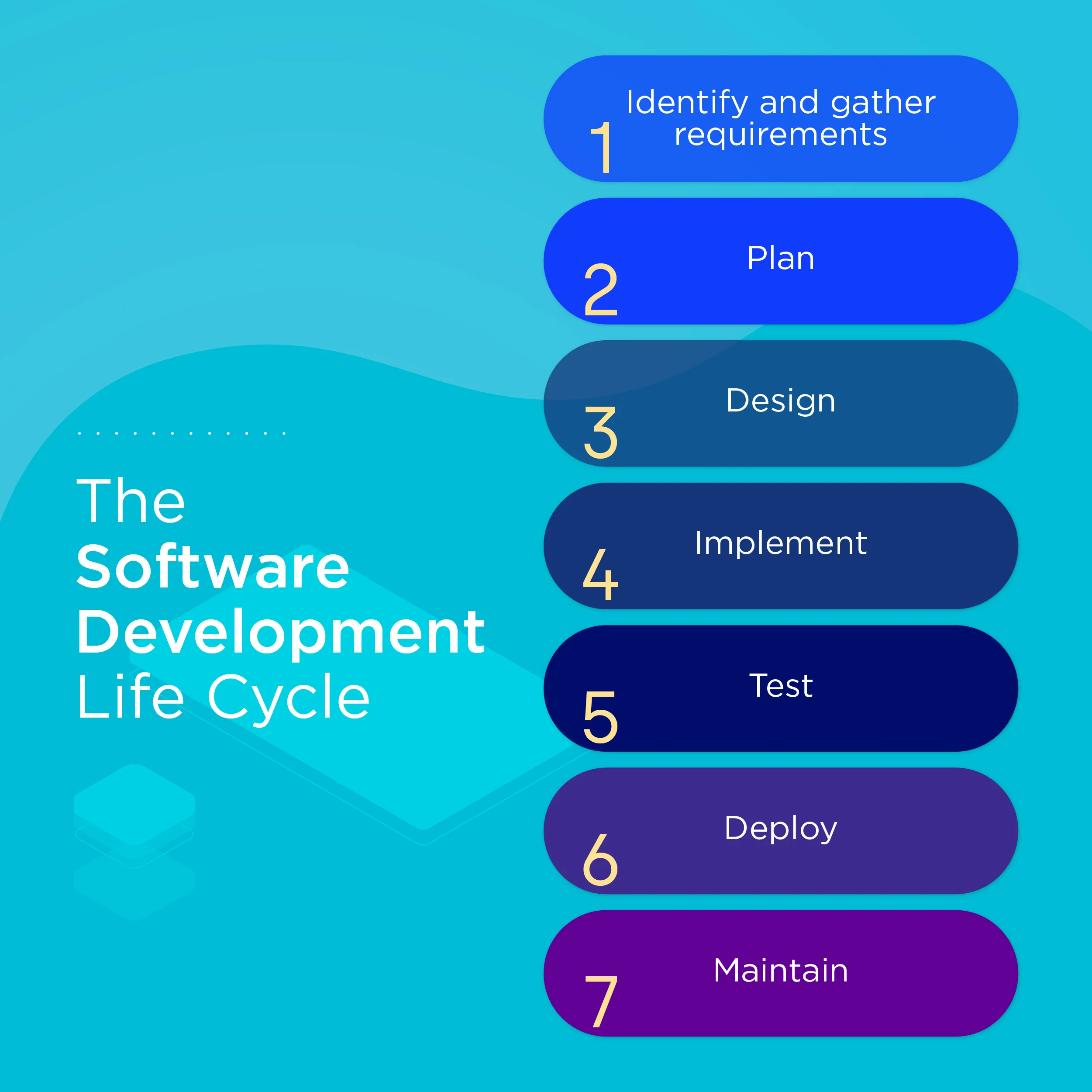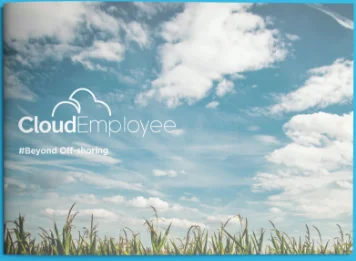What Is SDLC (Software Development Life Cycle)?
Software development life cycle refers to a series of steps by which one or multiple software applications are developed and delivered to a customer. All software applications start with an idea and always end with the delivery of the project. In this article, you will find everything you need to know about the SDLC which includes:
-
SDLC history
-
What is SDLC and how did it evolve?
-
What is the SDLC process?
-
SDLC benefits
-
A description of the seven phases of the SDLC
-
SDLC models most commonly used
-
Best practices for SDLC
-
Management systems for SDLC
SDLC History
Software developers have existed since the dawn of computers and their operators. Over the decades, since the invention of computers, practices, and methods for developing software applications have evolved rapidly. Computer hardware, development tools, and general organizational thinking about management have allowed these practices and methods to adapt to the ever-changing technology industry.
As a result of this progress, private and public software development efforts around the world have resulted in new methods for software development. Despite their vast differences in approach, these methods share a common goal which is to develop software as efficiently, effectively, and cost-effective as possible.
What is SDLC, How Did It Evolve?
Complex software is developed in a series of steps and delivered in a variety of forms. There is one common trend among the various methods; They all begin with an idea, one way or another. Depending on the method, the idea turns into a document, or perhaps a prototype. Artifacts created in one step become inputs for the next, whether they are documents, diagrams, or working software. Eventually, the customer receives the completed software. Software Development Lifecycle (SDLC) refers to the sequence of steps used by these methods.
What is The SDLC Process?
Developing software is an endless process as most software applications are rarely completed at their first release. There are always more features to develop, build, and deploy, and lots of bug fixes to tend to in the development process.
Software errors and bugs are reported by an error monitoring software, which feeds into the development process by providing new feature requests and improvements to existing features. As a result, the Software Development Life Cycle is the most general term for software development methods. Each method has its sequence of steps. They tend to run in cycles with each iteration, regardless of the method.
SDLC benefits
“If you fail to plan, you plan to fail” - Benjamin Franklin
An effort as complex and team-based as software development can be very difficult without a plan. Software development methodologies (several of which will be discussed below) describe how software can be developed. It is very difficult to determine which method is the most effective overall, which suits certain types of software best, and how to evaluate success in software development. However, one thing is certain; any plan is better than none.
The development team becomes a herd of cats if there is no structured plan in place. Developers don't know what to create, a project manager does not know how far the project is from completion and so many other problems. Businesses without a plan don't even have a way to determine if the final product meets their needs.
With a formally defined SDLC, software development achieves a variety of benefits which includes:
-
Defining a complete step based on deterministic criteria can help confirm whether it is truly complete
-
Roles and responsibilities are clearly defined among developers, designers, business analysts, and project managers.
-
For each step in the entire process, there is a common vocabulary.
-
From one step to the next, there are clearly defined inputs and expected outputs.
-
Development teams and stakeholders have defined communication channels.
A Description of The Seven Phases of The SDLC
Generally, these steps are the same regardless of the methodology. The steps usually occur in this order, though they can also be mixed, so that several steps can occur simultaneously.
Agile methods tend to "wind together" all of these steps into a tight, rapidly-repeating cycle as we'll discuss later. Waterfall methods take each of these steps one at a time. Results from one step become inputs for subsequent steps. The seven phases of the software development lifecycle (SDLC) includes:
-
Identifying and gathering requirements
Technology teams must be able to communicate the business's requirements for new development and enhancement. SMEs and business stakeholders provide requirements during the requirements phase.
Product Managers, Developers, and Architects work with SMEs to document business processes that need to be automated by software. These requirements are usually outlined in a document that comes out of this phase of a Waterfall project. By contrast, agile methods may lead to a backlog of tasks to be completed.
-
Planning
Project management and product management are part of the planning phase. Examples of these are:
-
Scheduling projects
-
Estimation of costs
-
Provisioning
-
Allocation of resources (both human and material)
-
Capacity planning
Plans, schedules, cost estimates, and procurement requirements are some of the outputs of the planning phase. To ensure all perspectives are represented, Project Managers and Development staff should work with Operations and Security staff to account for all the departmental needs.
-
Designing
Software architects and developers can begin designing the software once the requirements are understood. They will follow established patterns for application architecture and software development. To facilitate reuse and standardization, architects may use architecture frameworks such as TOGAF (The Open Group Architecture Framework) to compose applications using existing components.
To solve algorithmic problems consistently, developers rely on design patterns and data structures. In addition, rapid prototyping, also called a spike, may also be used to compare solutions. Here is what is produced:
-
Spikes produce code that can be used as a starting point for the development of the software application.
-
Patterns and components selected for the project should be listed in the design documents.
-
Implementing
Software is produced during this phase. A development team may conduct this phase in time-boxed "sprints" (Agile) or as a single block (Waterfall). Regardless of the method involved, development teams should produce working software as quickly as possible. To ensure that business stakeholders' expectations are met, they should be engaged regularly. Testable, functional software should result from this phase of the SDLC.
-
Testing
SDLC’s testing phase is considered to be one of the most crucial phases. Quality software cannot be delivered without testing. Many types of testing are necessary to measure quality which includes:
-
Performance testing
-
Unit testing (functional tests)
-
Code quality
-
Security testing
-
Integration testing
Automating tests is the best way to ensure that they are run regularly and are never skipped because of expediency. With Continuous Integration tools, such as Codeship, tests can be automated. The developed software is ready for deployment in a production environment after it has been tested appropriately.
-
Deployment
Ideally, the deployment phase should be highly automated. The deployment phase is almost invisible in enterprise organizations that have reached a high level of maturity in which software is deployed the moment that it is ready. This process involves some manual approvals in enterprises with lower maturity, or some highly regulated industries.
But in those cases as well, it is best if the deployment itself is fully automated in the continuous deployment model. Medium and large-size businesses use Application Release Automation (ARA) tools to automate the deployment of applications to production environments. These tools are usually integrated with Continuous Integration. The result of this phase is the release of working software to production.
-
Maintenance
In a sense, the operations and maintenance phase is the end of the process. But the SDLC does not end here. To ensure proper operation, the software must be monitored continuously. Production defects and bugs must be reported and addressed, which often feeds work back into the process. It is not essential to go through the full lifecycle when fixing bugs, however, at least an abbreviated process is necessary to ensure the fix does not introduce new problems (known as a regression) to the system.
Software Development Life Cycle

Most Commonly Used SDLC Models
Waterfall and Agile are the two best-known methodologies within the SDLC. Here is a brief description of how they relate to the SDLC:
Waterfall methodology involves following a rigid, predetermined path through a series of phases. This is similar to traditional engineering methods. A paper credited with originating the Waterfall method describes it as fundamentally flawed. A misunderstanding of this original work led to the method now known as "Waterfall." Despite that, Waterfall became one of the most widely used methodologies for large projects worldwide.
The planning and design phases of the waterfall methodology are lengthy. Software is developed, tested, and then deployed. Many believe that waterfall is too rigid to adapt to changing requirements as the software grows. During the development process, feedback is not supported, leading to changes in requirements. Due to the shortcomings of Waterfall, Agile methodologies were developed as an alternative.
2. Agile Model
A group of software developers drafted and signed the Manifesto for Agile Software Development in 2001. It was clear from the manifesto that Waterfall, at the time the de facto method for development, and Agile, the newer method, were in stark contrast.
Waterfall poses several problems with software delivery that were addressed by the Manifesto. Agile is more flexible than Waterfall and allows for uncertainty where Waterfall tends to be one-way. It emphasizes teamwork, prototyping, and feedback loops that allow the development effort to change direction based on changing requirements.
Since the signing of the Agile Manifesto, several variants of Agile have emerged. In scrum, specific roles and events are defined as ceremonies. Kanban has fewer prescribed steps and is more flexible. These are often combined by agile teams to adopt a bespoke process that fits them perfectly.
Best Practices for SDLC
Many companies around the world still use the waterfall methodology, but the agile model is rapidly gaining traction. Some practices reduce risk and increase the chances of success regardless of the method used. These practices include:
1. Source control
It is impossible to overstate the importance of a central source control repository. Without source control, development teams take a risk, both with the code and their processes. By ensuring that code is gathered together in one place, source control reduces risks. A central repository saves the day when a developer’s workstation or file server fails. Moreover, modern source control systems enable continuous integration.
2. Continuous Integration
Consistent Integration (CI) is intended to maintain a functional state of the software. In the past, development teams would write thousands of lines of code, then attempt to integrate them. The process of integrating that much work all at once is painful, tedious, and error-prone. With continuous integration (CI), the software is built each time code is modified. The CI system notifies developers if there is a problem, and the build is not considered as complete until it has been successfully completed using proper CI practices. As a result, errors and defects are prevented from entering software that should be bug-free.
Management Systems for SDLC Processes
It can be difficult to track large-scale, complex software development projects. This problem has inspired a whole class of software systems: Application Lifecycle Management. With larger efforts, these systems become increasingly important. Work management, bug tracking, and analytics are all available to assist with decision-making.
Conclusion
The development and deployment of software begin with a concept, which goes through several phases. Updating and adding new features to an application or system continues throughout its lifecycle, even when it is decommissioned or replaced. Over the decades, much more software development techniques have evolved.
In companies large and small, waterfall methods are still common, but Agile is rapidly taking their place. Ensure to always select the right tool for the job, regardless of the method. Without them, it is difficult to deliver reliable software. It's better to use one method than none at all, but there is no perfect method.
In need of developers? Here’s where you can find the best pool of tech talents. With Cloud Employee, you can hire dedicated offshore developers across many technologies. Talk to us, learn more how Cloud Employee works, or see our Developer Pricing Guide.
Work with world leading tech businesses
We connect high-performing software engineer talent in the Philippines with some of the world’s leading and most innovative Tech companies.
Submit CV













